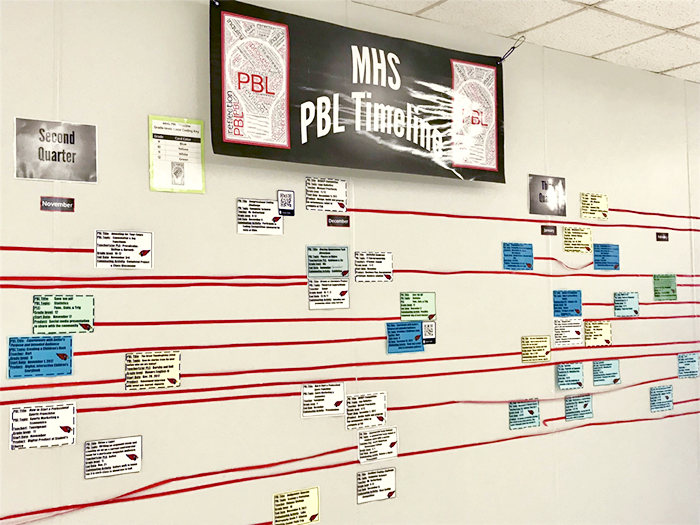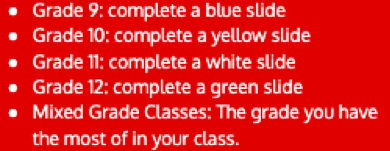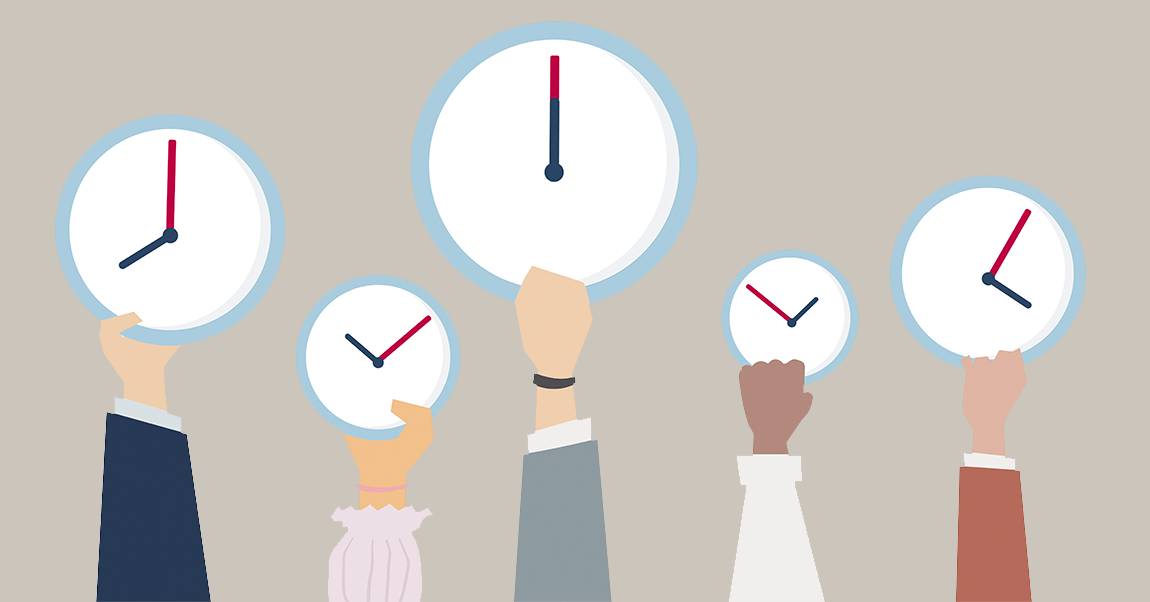
As our high school began to implement PBL, staff members expressed concern about students being involved in multiple projects at one time.
In the early stages of implementation, it is completely understandable that educators new to PBL can feel a bit overwhelmed, and in turn worry about students feeling overwhelmed. Thinking through the student perspective is helpful during the implementation of any plan, but we also needed a fact-finding mission to know if the issue was real.
When offering professional development or a developing a tool such as the Schoolwide PBL Timeline, it is important for school leaders to model the PBL process, to build a school-wide PBL culture.
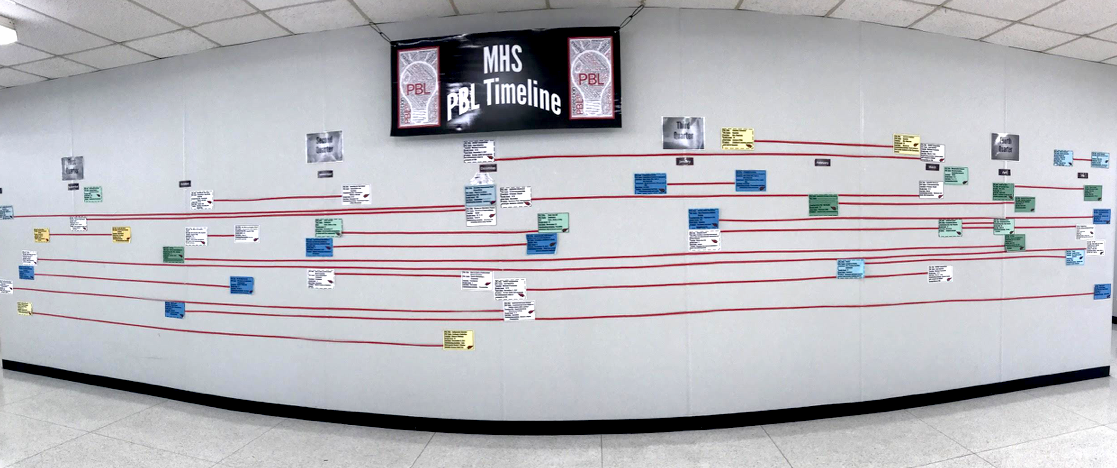
For example, our school’s Timeline Project was driven by teacher inquiry. If we are going to ask teachers to make the shifts needed to employ PBL principles, it is important to demonstrate those principles in ways that show the importance of their inquiry process. As teachers are often most comfortable leading each step of the learning process with little input from students, we felt we needed to model what it’s like to take action based on the needs of those who have questions or requests. We wanted to point out that students need a similar opportunity to question and have a role in making decisions about their learning process and experiences.
As you consider providing a PBL timeline for your building, think of ways that you might model Gold Standard PBL. How might you involve teacher voice and choice? How might the following elements be personalized for your building? How might the timeline be shared throughout the building and beyond?
Here’s how our plan for creating a Schoolwide PBL Timeline reflected the Essential Project Design Elements:
- Driving Question: How can we share and monitor the timing of projects as they occur throughout the school year?
- Public Product: Timeline
- Sustained Inquiry: Which timeline version/tools? How will information be gathered from each teacher? How will information be shared with stakeholders?
- Authentic Audience: Staff, students, parents, visitors
- Voice & Choice: teachers determine the project, the timing of the implementation, and which classes they will include
- Critique and Revision: staff response, adjustments to the timeline
- Authenticity: Initiated in response to staff concern/question
- Reflection: What does the timeline tell us about the student experience? What connections can be made between projects?
Here’s the result of our inquiry process.
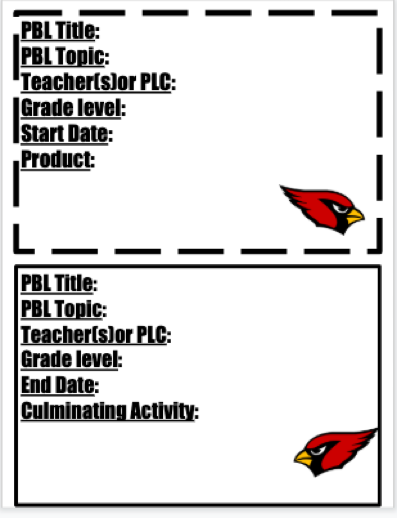
One wall of the building was designated to display a timeline showing the timing and basic information for each project.
A template was designed in Google Slides and then shared with the staff to collect information on each project. Teachers were asked to complete a separate slide for each project. In the template, a copy of the slide (shown here on the right) was made for each grade level using a different color background for the slide. Corresponding paper colors were used to print the slides. (Tip: print settings were set to NOT print the background color in order to conserve printer ink.)
Initial slides in the template included directions for teachers. With so much information being sent to teachers, it’s important to have this information readily available for easy access as needed. Directions were given in an email and then repeated in the slide deck for the teachers’ convenience. Starting the directions with a brief explanation of the purpose for this project was an intentional effort to support the “why” of PBL and encourage a sense of partnership with teachers in order to encourage a collaborative culture. Taking the time to explain the purpose is a practical way to respect the thought process of our teachers and model a collaborative mindset.
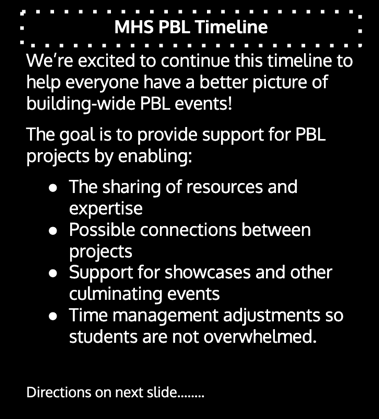
While teachers were adding information to the slides, the following labels were added to the Timeline Wall:
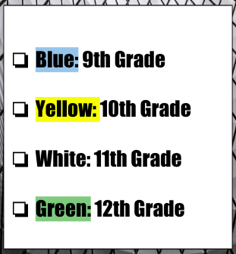
- One for each quarter and each month
- A “key” explaining the color-coding by grade level
As slides were completed, they were printed, added to the wall, and connected with the red tape. The tape was especially helpful for connecting the start and finish for projects lasting more than two quarters. Teachers could look at the wall and quickly see the number of projects in progress for their grade level. The subject/PLC line on each page allows teachers to see projects in other classes typically taken by the students in their classes.
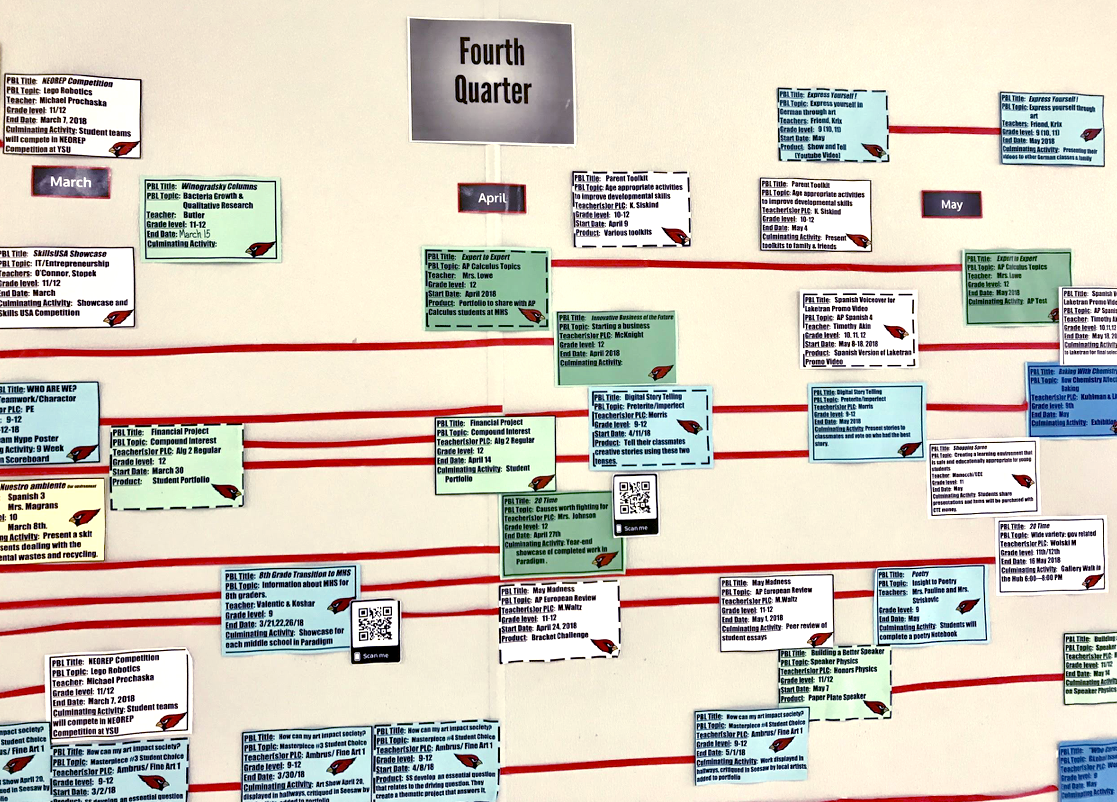
As some viewers responded with deeper questions, QR codes were added to give viewers easy access to videos already created for some projects.
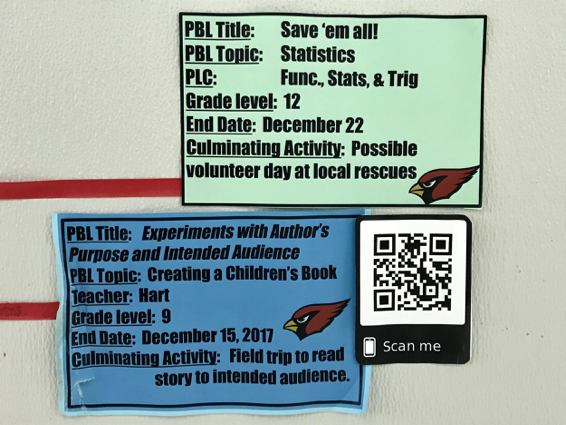
We reflected on what we saw and learned by doing our school-wide “project.”
The Schoolwide PBL Timeline was created in response to an authentic problem and need-to-know questions from teachers. We saw that the Timeline allowed all team members in the school to see the big picture and make connections. The initial question about over-scheduling students was answered, as we found it to be very rare that students were overwhelmed as a result of project schedules.
“Building the right culture for PBL requires ongoing effort and attention by both teachers and students. Instead of being hidden, a PBL culture needs to be openly constructed, reinforced, and celebrated.”
Suzie Boss in Project Based Teaching: How to Create Rigorous and Engaging Learning Experiences
The Timeline is one aspect of creating a PBL culture that listens and responds to inquiry and then follows up with reflection and revision. This visual also allows for celebration as we stand back and see the great work our teachers and students are creating!
